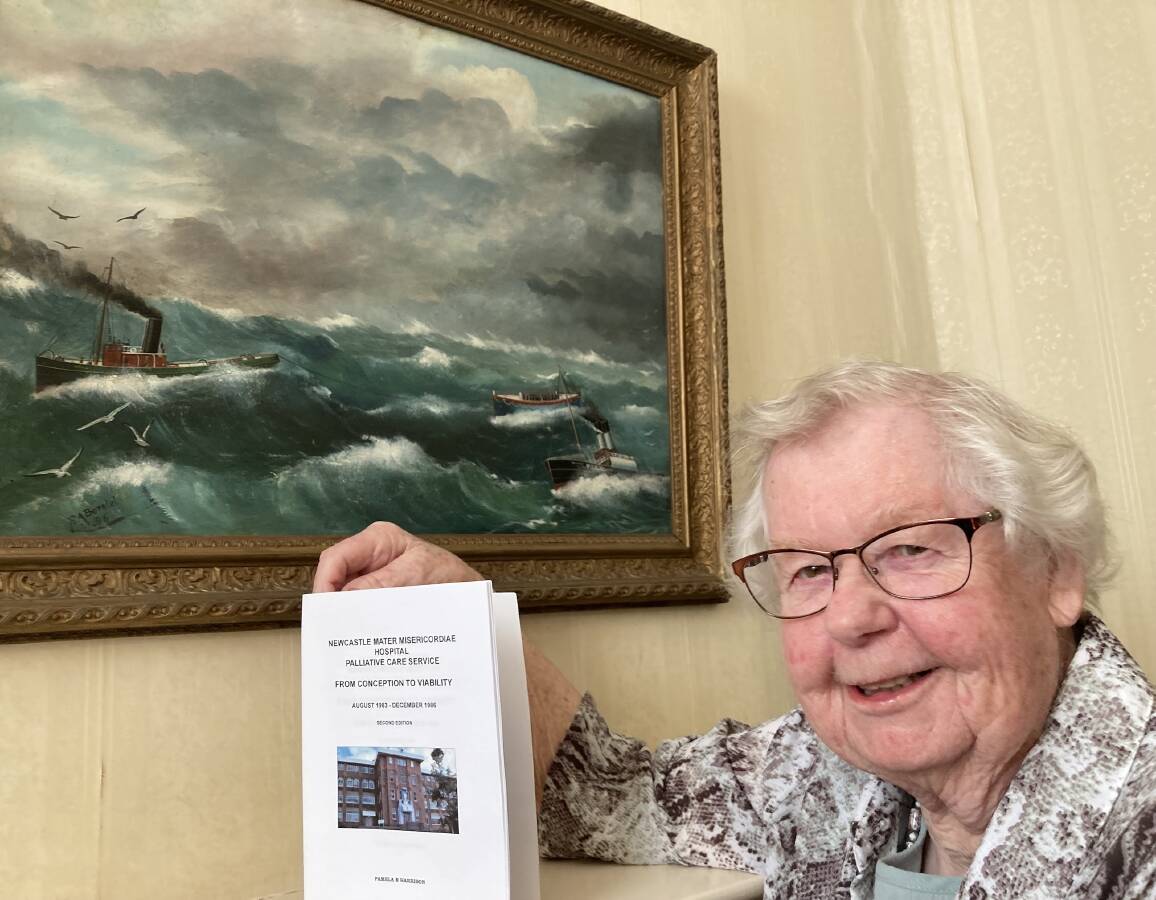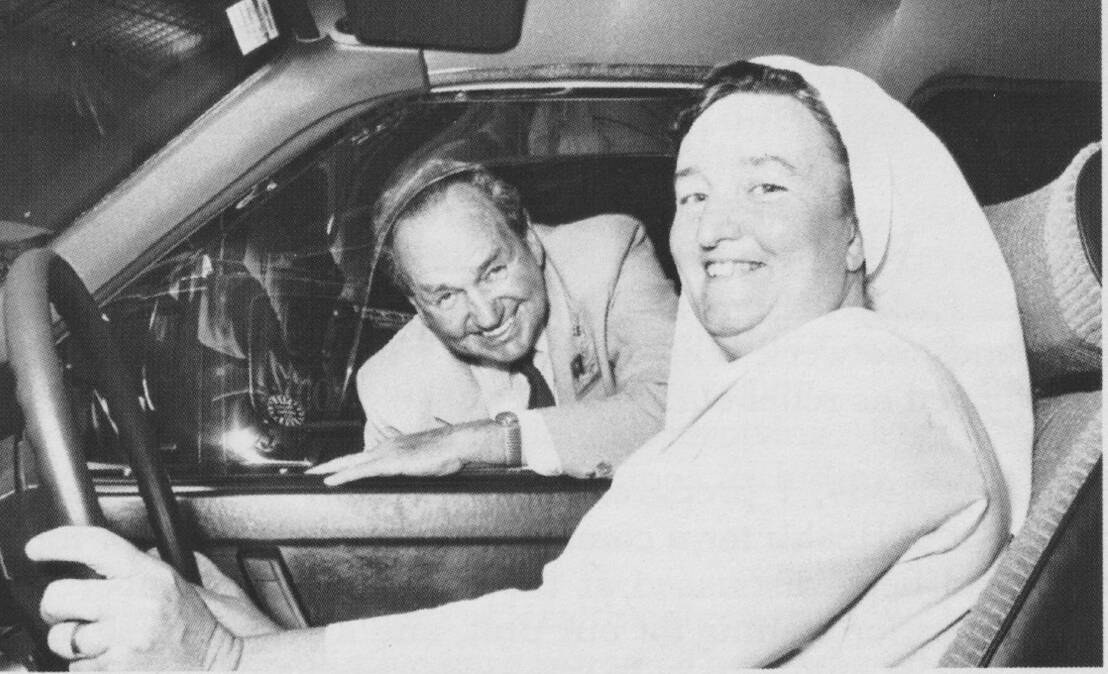
THERE are many community heroes in the Hunter Valley.
Yet these regional heroes often go unrecognised, while their work is vital. For most of the time the public presumes, say, certain medical services have always existed, that they appeared out of nowhere when most needed.
It can happen, but it requires some remarkable, dedicated individuals. In Biblical times, they would be called Good Samaritans.
Take the pioneering, visionary work of Newcastle's Palliative Care Service at the Calvary Mater (Misericordiae) Hospital.
Last month, it celebrated a major milestone of 40 years providing compassionate care for patients nearing the end of their lives, plus assisting their loved ones.
These days, the Newcastle's Calvary Mater supports more than 500 patients at any one time both as inpatients and out in the community. It's the largest specialist palliative care provider in the region.
To support patients facing life-limiting illnesses with dignified and comfort-focused care is an emotionally challenging task requiring specialised skills and staff commitment. This hard work to maximise patient quality of life was founded by compassionate volunteers back in 1983.
"We've all been a team to get this far," a proud Pamela Harrison, now 86, told Weekender revealing how the service arose from necessity with the whole operation totally unfunded initially.
Dr Harrison heaped praise on Sister Mary Brendan O'Connor as the pivotal person from the start of the Pal Care service (with one patient) on August 24, 1983. That was because of her nursing experience, her empathy, her people skills and her sense of humour.
Later came Robyn Hirtes, the "very important" first funded palliative care nurse with quiet diplomacy skills. She died only last year.
What's probably little realised by the general public though is that Dr Harrison, a haematologist, is herself the co-founder of the long existing service trying to alleviate the suffering of terminally ill patients now from the Hunter, Lower Mid North Coast and New England regions.
In fact, she has shown selfless dedication throughout her career after joining the Mater in 1954 as a trainee pathology assistant. Even in retirement she spearheaded the Mater's heritage committee, carefully cataloguing the hospital's past and even setting up a museum there in 1997.
No better person has an insider's view of the major initiative to create the service to help cancer patients. So, we're fortunate she revealed details as guest speaker in an unreported speech recently to commemorate the Mater's 40th anniversary of the Pal Care service. A highly condensed version of this follows.
Later, she joked as she told Weekender: "Sometimes (when asked) I tell people I started the palliative care service, but I think they think I must be demented!
"While I was working fulltime at my job as a haematologist, I worked 24/7 in a voluntary capacity to start the service with a Sister of Mercy nurse and we kept it going for nearly 3 1/2 years until it was funded.
"Let me begin by asking you to imagine two women, one a doctor and the other a nurse, who had only just met, starting a palliative care service with no planning, no training, no equipment, no funds, no support team and only a mud map to guide them," she noted.
Finally, after achieving their goal of a viable palliative care service, it was then "applauded by Dame Cicely Saunders, the world pioneer of hospice and palliative care, based at St Christopher's Hospice in London, and who told me it was unique in her experience.
"And why were we so ill-equipped? Because at that time there was no funding of any sort and hardly any knowledge of palliative care in the Hunter region.
"Our mud map was a copy of the symptom control notes (from a Sydney hospital), combined with the knowledge I had gleaned from a palliative care seminar I had attended 10 days before, and my own research.
"Why do people climb mountains - because they are there. And why did we start the palliative care service? Because in 1982-83 the people of the Hunter were campaigning for the government to establish oncology and radiotherapy services in the Hunter and not rely on visiting specialists from Sydney," she said.
As the Mater's clinical haematologist, Dr Harrison would liaise with three related committees, including the Hunter Valley Cancer Appeal (HVCA), a group of dedicated lay people who raised thousands of dollars to help area cancer sufferers.
"I wanted a unit model which would suit the Mater and I resolved that if another one of my patients asked me to go home to die, I would try to make it happen," she said.
Enter the Mater's Sr Mary Tarcissius, the Sister Administrator, who permitted an outreach service and immediately suggested Mater nurse, Sister Mary Brendan O'Connor to help with the all-hours, 24/7 commitment for both women.

Dr Harrison said that before she gave her recent public speech she contacted Sister O'Connor, who is now blind, has always shunned publicity and was uncomfortable about what she would say.
"(But) without her, palliative care outreach could never have started, or survived at the Mater. We had to improvise. Sister Brendan borrowed the social worker's car during the day and the convent car at night. Equipment was borrowed. . . and later she also attended our first patient's funeral.
"We continued to improvise. Sister Brendan used hospital oxygen cylinders and I provided my luggage trolley to transport them. We did not have floatation mattresses to prevent bed sores so we used blow-up rubber li-los (camping mattresses) using water instead of air; when a bed was needed Sister Brendan would take a hospital brass bed, taken apart by wardsmen, to pack in her station wagon and she would then re-assemble it in the patient's home," Dr Harrison said.
Mobile phones were not available in the early 1980s, but Sister Brendan had a long-range pager. She told Dr Harrison she could always rely on the red phone in the nearest hotel if the public phone box was vandalised.
The HVCA was asked to help and in December 1983, together with the Hunter Nurserymen's Association and car retailer Young and Green, an automatic Holden Camira station wagon was donated. Sister Brendan now had reliable transport and it also doubled as her office for 14 months.
Funding for the service eventually came in late 1986 but there were still obstacles. Despite this, by then the outreach service had cared for 255 patients, 220 of whom had died. Almost 50 per cent had died at home, however, compared with 17.5 per cent, which had been the Hunter average for home deaths.
Next, money raised in an NBN Telethon allowed the Mater's 20-bed hospice to open in 1993. Meanwhile, volunteers continued their invaluable contribution to Pal Care.
"We also need to remember though that without the love, care, support and sacrifices made by the patient's loved ones, there can be no Outreach in palliative care," she said.
"Then, to my surprise, last year I was awarded the Order of Australia Medal, nominated, I have since learnt, by the Calvary Mater Newcastle, One of the Sisters of Mercy told me she was so pleased I was still alive to receive it.
"I must admit - so was I," Dr Harrison joked.







